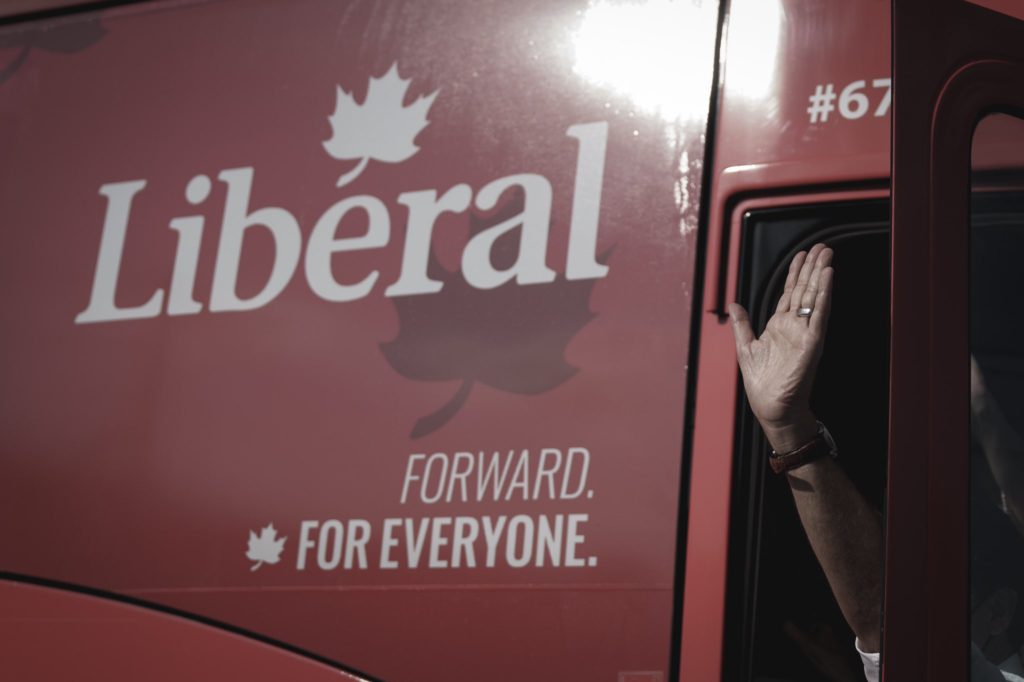Ontario Saves Justin Trudeau, Again

Thomas S. Axworthy
September 21, 2021
Ontario as A Place to Stand and a Place to Grow for Justin Trudeau-io-io certainly was one of the takeaways of the 2021 election early results. As I write this note in the early morning of September 21, hours after the vote, Ontario has given Trudeau’s Liberals 78 seats and 39 percent of its vote, almost exactly the same as in 2019 when Trudeau won 79 seats and 41 percent of the vote. So, with mail-in ballots still to be counted and a few seats possibly changing hands, Ontario alone will provide half of the seats Trudeau needs to continue as prime minister.
At this pace of the Liberals only losing 1 seat per election in Ontario — from 80 in 2015 to 79 in 2019 to 78 in 2021 — the province could still be contributing to Liberal wins well into the 21st century.
Once again, the Greater Toronto Area (GTA) was a Liberal fortress: the Liberal party won 48 seats and 49 percent of the vote compared to five seats and 31 percent of the vote for the Conservatives and 0 seats and 14 percent of the vote for the NDP. Indeed, the Liberals similarly swept Montreal and Vancouver, so the urban appeal of the Liberal party is very widely based. The 905 component of the GTA, which holds about 30 swing seats, continued to vote Liberal, much like downtown Toronto, and this result, more than any other, doomed Conservative hopes.
To win in Ontario, and thus to win nationally, the Conservative Party must keep its base in rural and small-town Ontario, take a fair share of the ridings in the 905 and hope the NDP can attract progressive voters away from the Liberal Party. In 2011, Stephen Harper swept the 905 by attracting and turning out swing voters to the Conservative party while benefiting from the Jack Layton factor as the NDP rose to over 20 percent in the 905. (For those interested, in the February 2015 edition of Policy Magazine, Rana Shamoon and I discuss Harper’s “Conservative dominance”). But in 2015, the NDP dropped to 10 percent in the 905, and it has never recovered there enough to seriously split the Liberal vote. In 2021, the NDP vote in Toronto was only 14 percent, less than their national vote of 18 percent.
As the other parties look to their electoral futures, and especially how to succeed in Ontario, each faces a challenge. Trudeau cannot be overly happy with the results as the whole point of the exercise, from his perspective, was to win a majority, which he failed to do. The five-week campaign went through three phases: the first two weeks saw the Liberals dropping like a stone as Canadians were furious about an election being held only for partisan advantage during a pandemic, which was far from over. The first two weeks were a referendum on Justin Trudeau’s judgment, which the Liberal leader clearly lost. In the second two weeks after Labour Day, the Liberal bleeding stopped and the Conservative momentum stalled. In the final days, traditional patterns re-emerged, especially in Ontario, and the election returned to the 2019 status quo.
In the final days, traditional patterns re-emerged, especially in Ontario, and the election returned to the 2019 status quo.
Trudeau knows that keeping progressive voters in the Liberal coalition is central to his party’s success. As he bargains with the NDP in the next Parliament, expect pharmacare or other big-ticket items on the social and health care agenda to take centre stage. Fiscal restraint, rarely a Canadian strength in any case, will be out the window.
Jagmeet Singh of the NDP has a harder row to hoe. His party made some spirIted charges against the Liberal incumbents in Toronto seats such as Davenport and Parkdale-High Park, but strategic voting by progressive stalwarts to keep the Tories from winning nationally was enough to save the Liberal MPs. Singh will claim credit for whatever progressive measures the next Parliament passes but it will be the Liberals who are best positioned to win favour.
Erin O’Toole has the most difficult job of all the leaders in deciding how to appeal to Ontario voters. His strategy was clear — tack to the centre by pulling together a semblance of a climate change policy, and try to outflank the Liberals by focussing on union and worker rights. Symbolically, he asked Brian Mulroney — leader of the old, and successful, Progressive Conservatives — to appear with him but not Stephen Harper, another successful prime minister, but a decidedly conservative Conservative.
But by moving to the center, O’Toole opened a gap which Maxime Bernier and the People’s Party of Canada were only too happy to fill. Bernier received only 1.6 percent of the national vote in 2019 but his party received 5 percent of the vote in Ontario in 2021 and in battleground seats in the suburbs and in small Ontario cities, the rise of the PPC hurt the Conservatives.
Ontario is the Big Apple of Canadian politics: it has sustained Justin Trudeau for three straight elections with the Conservatives and NDP reduced to small bites. To change that, the Conservatives will need either a new formula or a new leader.
Contributing Writer Thomas S. Axworthy is Public Policy Chair at Massey College, University of Toronto. He was Principal Secretary to Prime Minister Pierre Trudeau from 1980-84.
